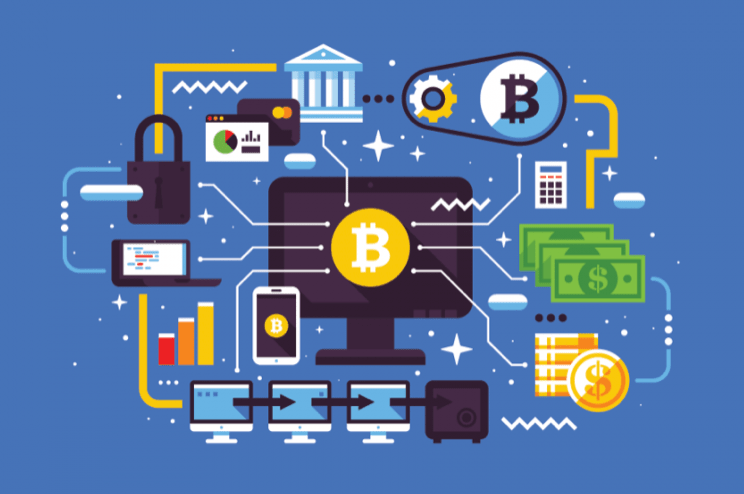Blockchain technology has gained significant attention in recent years, primarily due to its association with cryptocurrencies like Bitcoin. However, its potential extends far beyond digital currencies. As a revolutionary approach to data storage and management, blockchain offers a secure, transparent, and decentralized method for recording transactions and information. This article explores the fundamentals of blockchain technology, its key features, applications, challenges, and future prospects.
What is Blockchain?
At its core, a blockchain is a distributed ledger technology (DLT) that records transactions across multiple computers in such a way that the registered transactions cannot be altered retroactively. This decentralized nature ensures that no single entity has control over the entire chain, enhancing security and transparency.
A blockchain consists of a series of blocks, each containing:
- Data: This can include transaction details, timestamps, and cryptographic hashes.
- Hash: Each block contains a unique hash of the previous block, linking them together in a chain. This ensures the integrity of the data, as altering any block would change its hash and disrupt the entire chain.
- Nonce: A nonce (number used once) is a cryptographic puzzle that miners solve to create a new block. This process is known as mining.
4 Key Features of Blockchain
- Unlike traditional databases, which are typically controlled by a central authority, blockchain operates on a peer-to-peer network. Each participant in the network has a copy of the entire blockchain, ensuring that no single entity can manipulate or control the data. This decentralization enhances security and reduces the risk of data breaches.
- Transactions on a blockchain are visible to all participants in the network. This transparency fosters trust among users, as everyone can verify the accuracy of transactions. While the data is public, personal information remains secure due to cryptographic techniques.
- Once data is recorded on a blockchain, it is nearly impossible to alter or delete it. This immutability is achieved through cryptographic hashing and consensus mechanisms, making it ideal for applications that require a reliable audit trail, such as financial transactions or supply chain records.
- Blockchain employs advanced cryptography to secure data and protect it from unauthorized access. Each block is linked to the previous block through cryptographic hashes, creating a secure chain that is resistant to tampering and fraud.
How Blockchain Works
Blockchain technology operates through a series of steps that ensure the secure and transparent processing of transactions:
- Transaction Initiation: A user initiates a transaction, which is broadcast to the network.
- Validation: Network participants (nodes) validate the transaction using consensus algorithms, such as Proof of Work (PoW) or Proof of Stake (PoS). This ensures that the transaction is legitimate and the user has sufficient funds.
- Block Creation: Once validated, the transaction is bundled with other transactions into a block. Miners (in PoW) or validators (in PoS) compete to add the block to the blockchain.
- Consensus: The network reaches consensus on the validity of the new block, and it is added to the existing blockchain. All participants update their copies of the ledger.
- Completion: The transaction is complete, and the updated blockchain reflects the new state of the network.
Applications of Blockchain
Cryptocurrencies
The most well-known application of blockchain is cryptocurrencies, with Bitcoin being the pioneer. Blockchain provides a decentralized platform for peer-to-peer transactions, eliminating the need for intermediaries like banks.
Supply Chain Management
Blockchain enhances transparency and traceability in supply chains. Each step in the production and distribution process can be recorded on the blockchain, allowing stakeholders to track products from origin to delivery. This helps reduce fraud, improve accountability, and streamline operations.
Healthcare
In the healthcare sector, blockchain can securely store patient records, ensuring that they are accessible only to authorized personnel. This enhances data security and interoperability among different healthcare systems, improving patient care and reducing administrative burdens.
Voting Systems
Blockchain can be used to create secure and transparent voting systems. By recording votes on a blockchain, the process becomes tamper-proof, reducing the risk of fraud and ensuring the integrity of elections.
Intellectual Property
Artists and creators can use blockchain to protect their intellectual property rights. By recording ownership and licensing agreements on a blockchain, creators can ensure that they receive proper compensation for their work.
Financial Services
Blockchain has the potential to transform the financial services industry by enabling faster and cheaper cross-border transactions, reducing settlement times, and increasing security. Smart contracts, which automatically execute transactions when conditions are met, can further streamline processes.
Final Words
Blockchain technology is transforming the way we think about data management and transaction processing. With its decentralized, transparent, and secure nature, blockchain has the potential to disrupt various industries and enhance the way we interact with technology. While challenges remain, ongoing advancements and increased adoption will pave the way for a future where blockchain becomes an integral part of our digital ecosystem. As we continue to explore its possibilities, the impact of blockchain on society and the economy will undoubtedly be profound.



